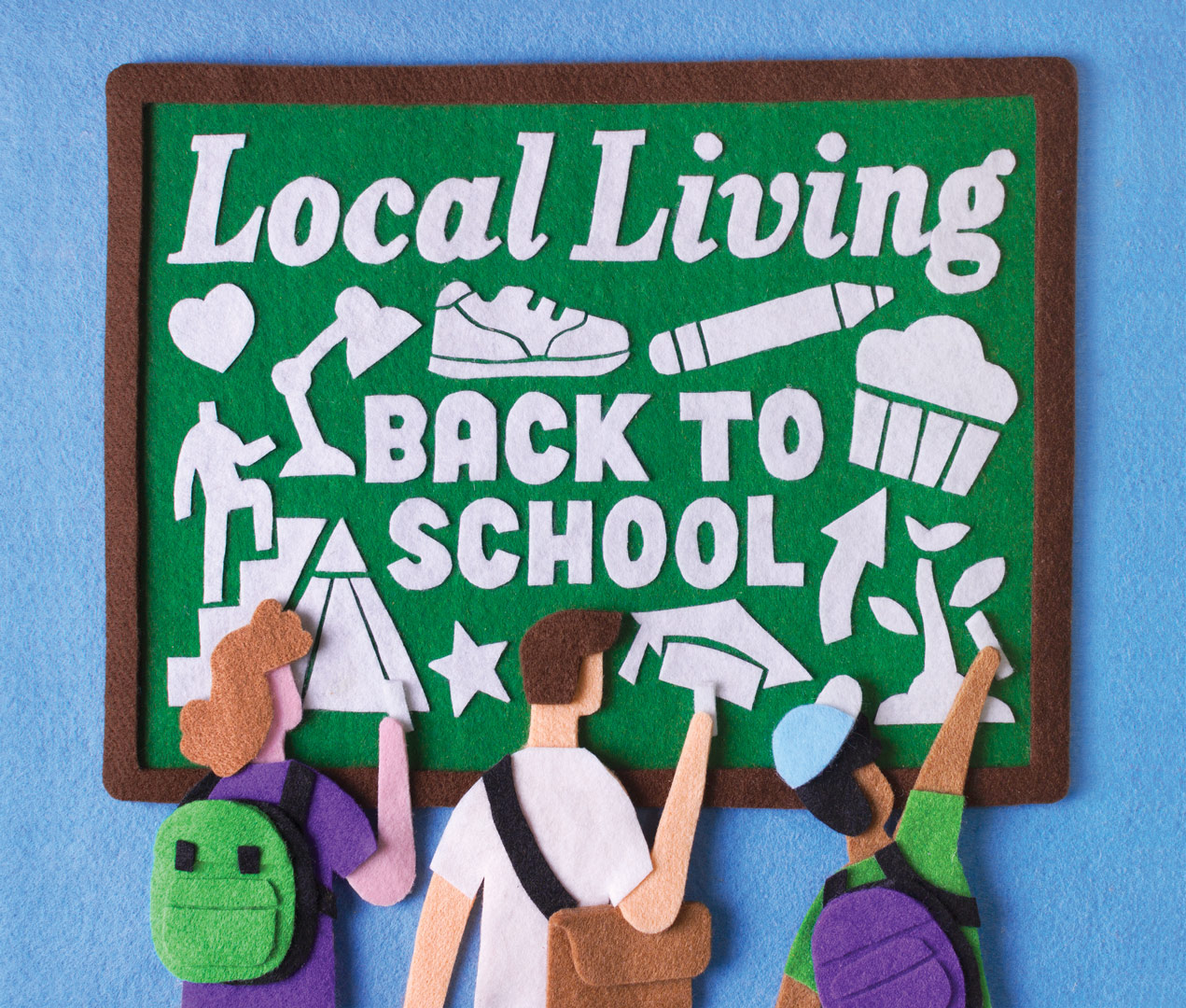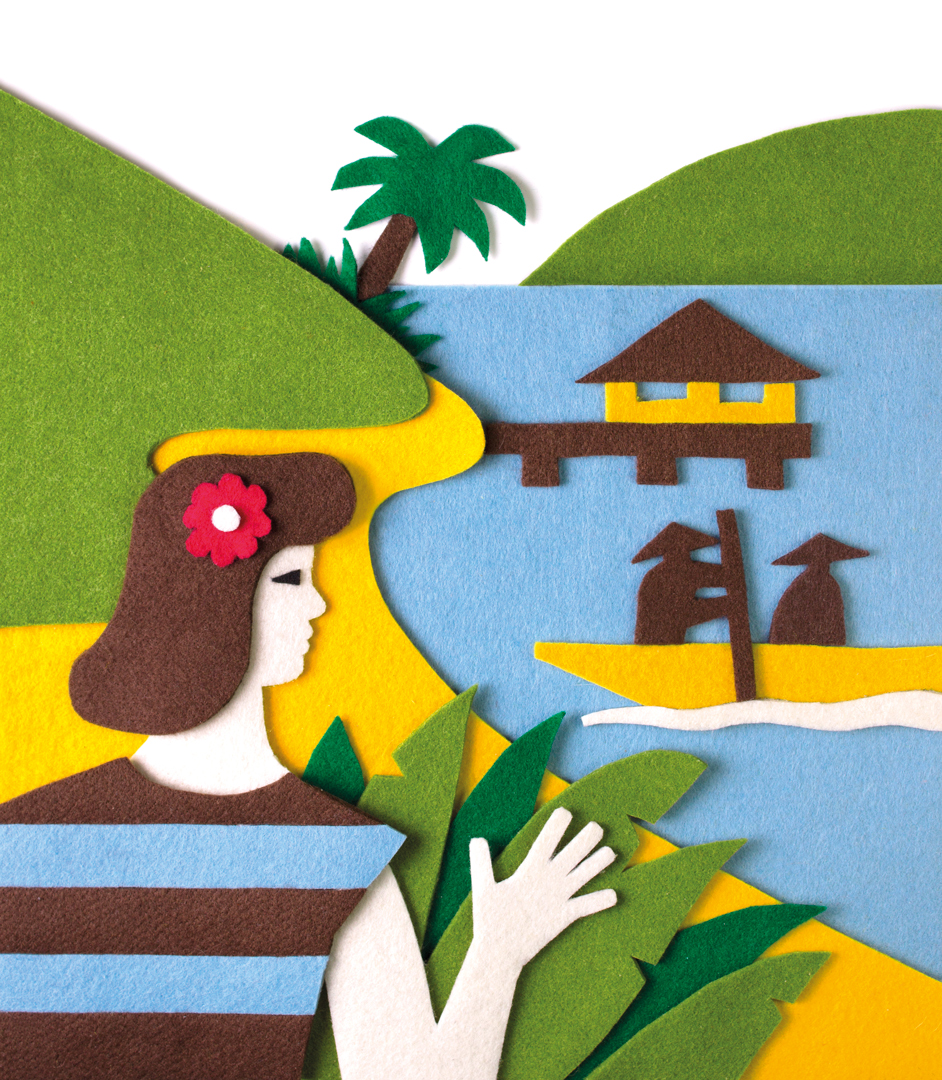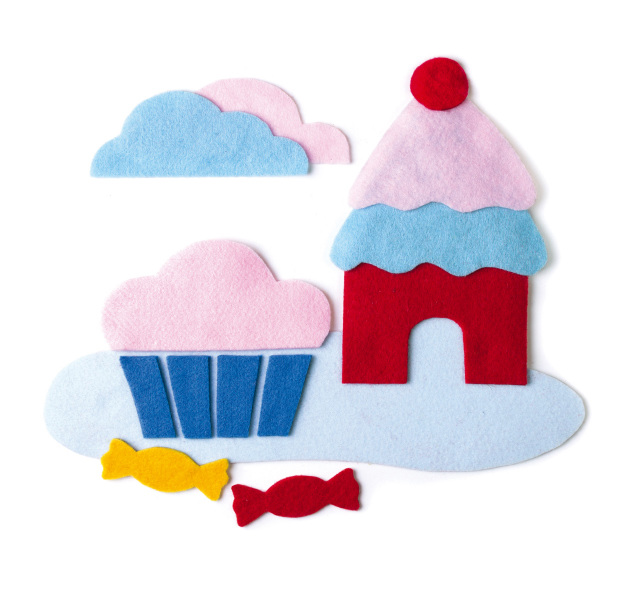Jacopo Rosati and his fuzzy felt illustrations

Italian illustrator Jacopo Rosati lives and works in Venice.
Starting his early career as a digital illustrator, he has since embraced a more DIY / hand-made aesethetic, establishing himself as a purely tactile image maker working with fuzzy felt.
We caught up with him to find out more about the inspiration behind his chosen material, and the playful techniques he uses to make his unique artworks.
When did you first discover the medium of felt? What inspired this move away from digital?
When I first started out as a freelancer I focused on isometric vector illustration, and even though I really liked it took me too much time to complete a single artwork. Since I work alone I felt it was better to move to something different, and I wanted to create something handmade, simple and visually stronger. I started to choose a proper material, I’ve discarded paper from the start since it’s already been used by a lot of illustrators. I’ve chosen fuzzy felt because it’s easy to cut and glue, and I have a wide range of colors to choose from.
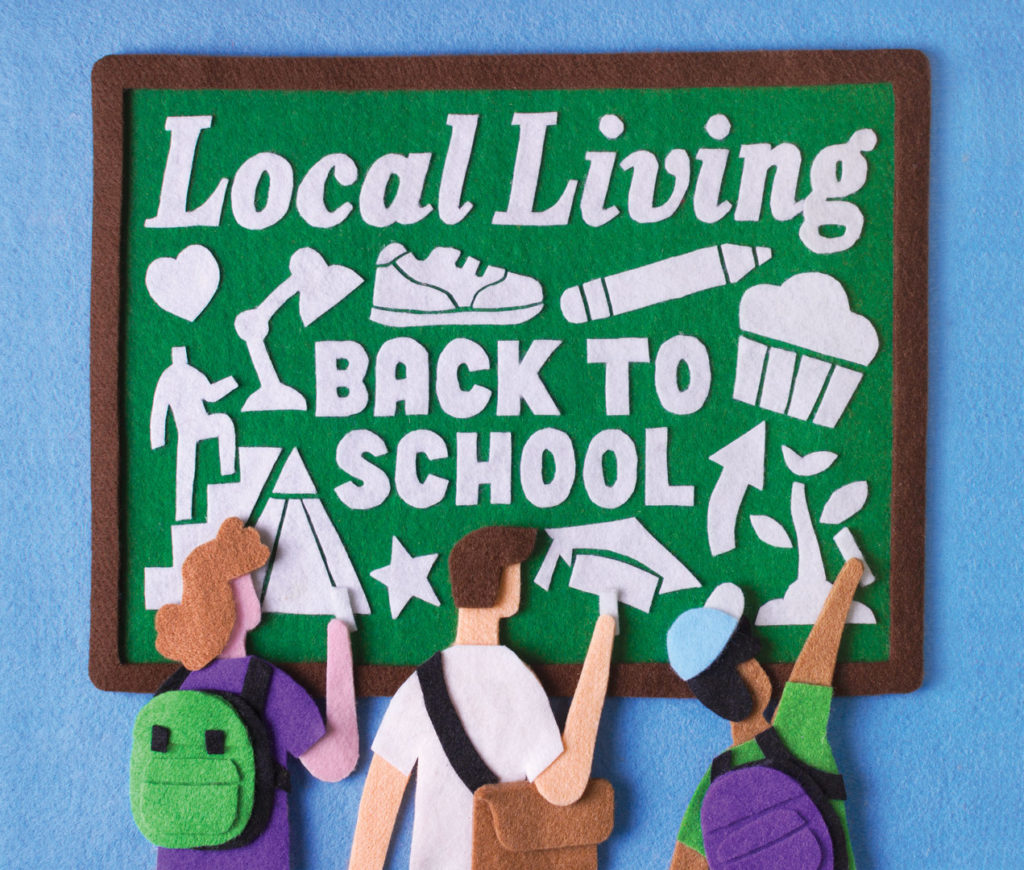 Can you tell us about your background?
Can you tell us about your background?
After graduating art school I started working as an illustrator in a graphic design studio here in Venice. At that time I wasn’t focusing on a single illustration style, since a graphic design studio need to meet different needs according to different clients. Therefore we would choose the style appropriate for the client to better convey a specific concept – so I was drawing stuff like realistic pencil portrait, digital illustrations, handmade artworks and graphic design.
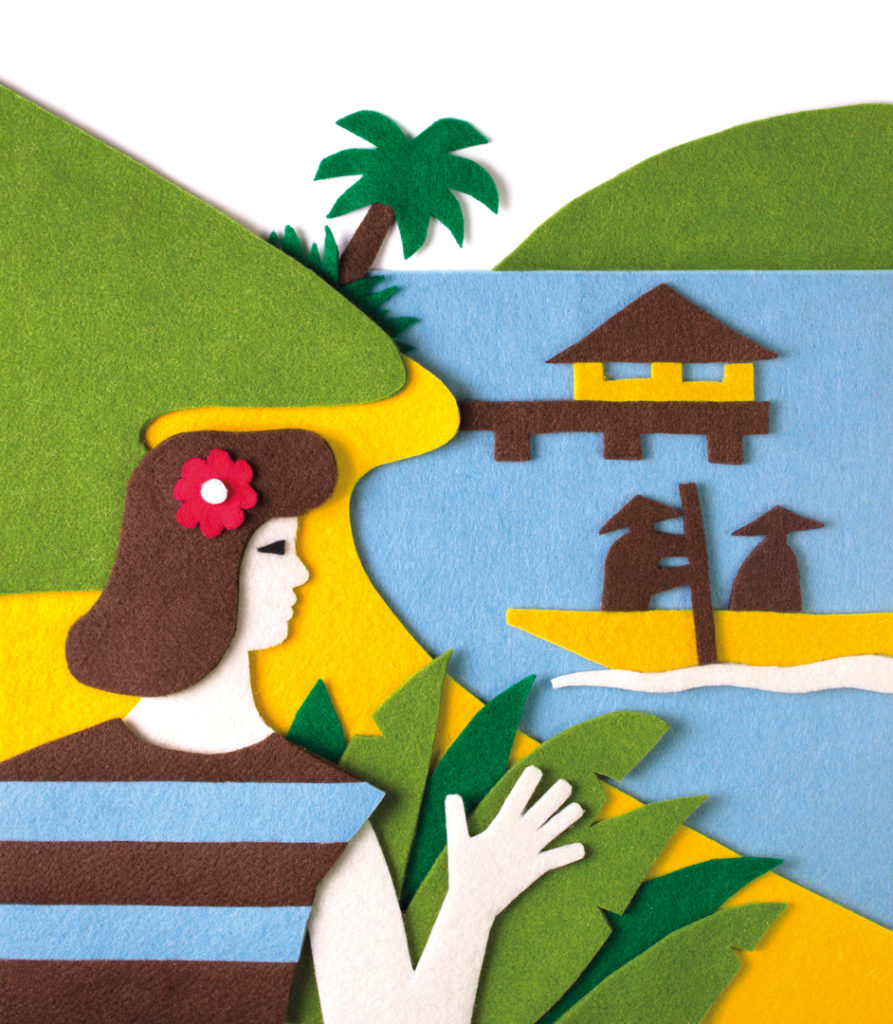
Felt fabric is easy to photograph since there aren’t strange light reflections or other common issues.
Talk us through your creative process:
First of all I draw a vector artwork which is almost identical to the final collage since I print all the different pieces on a thick paper sheet, I cut them off and I use them as stencils in order to outline the shapes on the felt fabric. After I have receive the green light from the client I start the crafting phase in which I cut all the different pieces, one thing to keep in mind that shapes tend to expand compared to the original vector artwork so I must double check margins ad bleed edges. Finally I glue down all the pieces and I take the final picture with an horizontal tripod and studio lights. The final phase consist in the cleaning of the picture and tweaking it for printing purpose.

How long is the process from initial concept through to producing the final photography / images that are used in editorial and advertising?
Timing depends on the sizes and complexity. In the last times I’ve became more quick and I can create and deliver a illustration in a couple of days, considering the sketch, the vector layout, the crafting and the final picture.

What research do you undergo to prepare yourself for a new project?
Editorial artworks are very specific and related to specific articles so you don’t know what you’ll gonna draw tomorrow. I usually start my research looking for other illustrations done with the same subject or concept try to avoid plagiarism of any kind. But the main efforts are focused on well represent a concept through a single picture which is the main goal of illustration.
Briefly run through the technical considerations involved in this type of design i.e, lighting, photography equipment, space etc – what are the basics required to execute this kind of imagery successfully?
I’ve developed these collage in a bi-dimensional way so I can take the pictures from the top with an horizontal tripods, which is parallel to the ground, plus this I use a couple of studio lights to create proper shadows.

What are your main inspirations and influences? How important is it for you to escape the studio and immerse yourself in your surroundings to recharge and renew your ideas?
Mainly pop culture and everyday life, I think that it’s very important to escape from the studio to recharge and better think about concepts and ideas even if deadlines and time zone sometime force you to work chained to the desk.
Do you keep sketchbooks, collect found materials, hoard books, magazines; take photographs, or use mood boards for instance?
I keep all my sketches even if the most of them aren’t on sketchbooks but on common white sheets, I also collect illustration and design books.

It’s important to escape from the studio to recharge and think about concepts and ideas – even if deadlines and time zone sometime force you to work chained to the desk.
What are the main challenges involved with working with felt?
The first issue is to find all the colors you need, so you must to have few textile shops (both physical and online) in which you can be sure to find the colors you need. The second big issue is the limit of the felt itself so every element must be bigger enough for being able to cut it with scissor. Therefore I think that when you work with handmade stuff you have to develop a style around its physical limits.
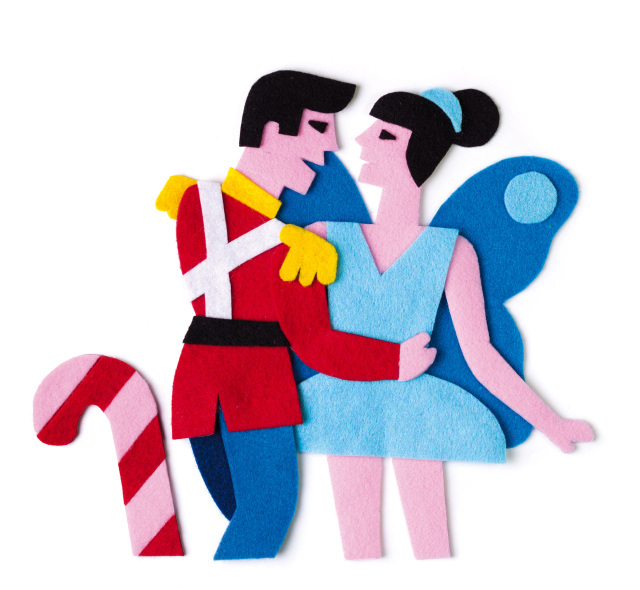
Any resources / books you recommend looking at for those looking to get into tactile illustration?
Honestly I haven’t a specific book regarding felt or handmade crafts, I actually never looked at that kind of books because I don’t want to do artworks which look like classic decorations or accessories commonly made of felt. A couple of books which really helped me a lot are “The Grammar of Fantasy” by Gianni Rodari and “Design as Art” by Bruno Munari.
Finally offer a workable tip for illustrators wishing to make a paper craft illustration for the first time – what are the basic tools required to try this?
Spend lot of time on the initial vector artwork. The more time you work on it the less problem you’ll have on the final artwork. Try to keep you table very clean and set up a small photo studio with a couple of lights. After that you just need to practice to improve your crafting and photograph skill.
Extracts from this interview were previously published in ‘The Beginner’s Guide to Tactile Illustration’ published on Creative Bloq.



